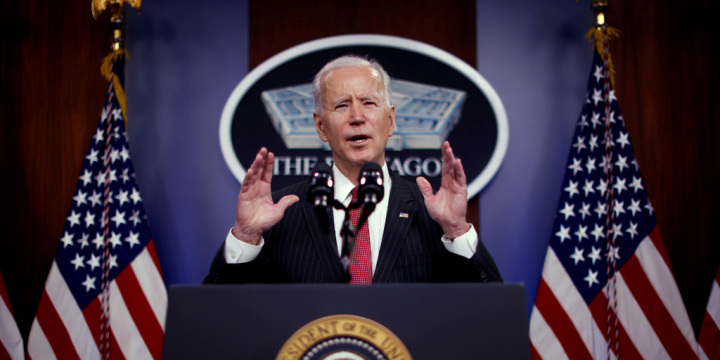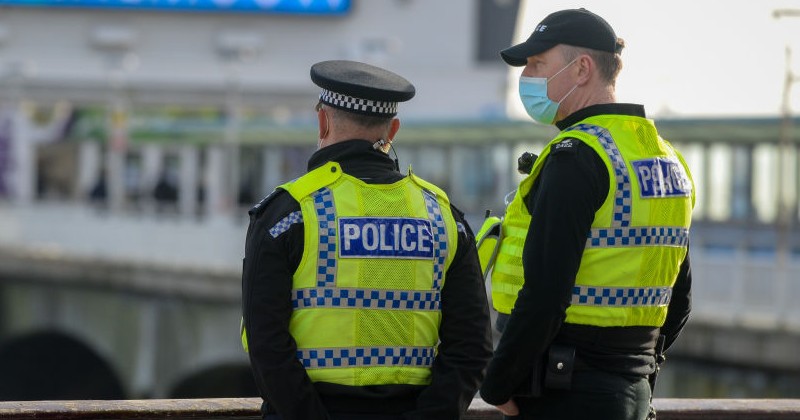A day after President Donald Trump finally broke his silence on North Korea after the isolated nation twice provoked its geopolitical adversaries in the span of just four days, Yonhap is reporting that the US sent four F-35B stealth jets and two nuclear-capable B-1B strategic bombers to train with South Korea’s F-15K fighter jets over the Korean Peninsula on Thursday in what it described as an “unprecedented” escalation of the allies’ military response to N.Korea’s provocations.
Thursday’s air-to-ground precision-strike drills were conducted a mock bombing drill, which simulated a surgical strike of key enemy facilities, over the Pilsung Range in the eastern province of Gangwon.
The “unprecedented” combined maneuver involved the F-35Bs from Japan and the long-range bombers based in Guam as well as a squadron of four F-15Ks, Yonhap said.
They used MK-84, MK-82 and GBU-32 bombs, according to Yonhap. In a statement, US Pacific Command said the flyover was a “direct response to North Korea’s intermediate range ballistic missile launch.”
“North Korea’s actions are a threat to our allies, partners and homeland, and their destabilizing actions will be met accordingly,” said Gen. Terrence O’Shaughnessy, commander of Pacific Air Forces.
The exercise was designed to “strongly counter North Korea’s repeated ballistic missile tests and development of nuclear weapons,” a South Korean official told CNN.
In response, KCNA, the state-run North Korean news agency, threatened more missile tests, saying “we will in the future, too, conduct ballistic rocket launching drill targeting the Pacific where the US imperialist aggressor forces’ bases are stationed.”
The demonstration followed the formal conclusion of the annual 11-day military drills between the US and the South known as the “Ulchi-Freedom Guardian” war games. The drills followed a demonstration of “overwhelming force” from the South Korean military that was ordered in response to the isolated North’s latest provocation.
Also mobilized was a KC-135 Stratotanker aerial refueling plane, a defense source said.
The F-35 Joint Strike Fighter, the most expensive and one of the most controversial weapons systems in US history, is held out as “the cornerstone” of US defense in the Pacific. Based at a US base in Iwakuni, the first of 16 fighters arrived in Japan in January, showing Washington’s “commitment to the defense of Japan with the most capable and modern equipment in the US inventory,” a US Marines official told CNN at the time.
According to the Marines, the deployment of the fighters to Japan was ordered under the Obama administration, and was not related to ongoing tensions with North Korea.
Meanwhile, Defense Secretary James Mattis appeared to push back against the president, saying that the US is “never out of diplomatic solutions” when it comes to North Korea. Trump had tweeted on Wednesday that he was tired of paying the North “extortion money,” and hinted that a military strike could be in the offing.
The South Korean Air Force characterized the training as a joint “air interdiction operation,” saying it showed the allies’ “resolve to deal resolutely” with the North’s provocations.
“Our Air Force has the capability of conducting perfect combined operations,” Lt. Gen. Won In-chul, commander of South Korean Air Force Operations Command. “No matter when, how and where the enemy provokes, we will perfectly retaliate to make it feel an insurmountable sense of fear and deep regret.”
A US military official reportedly told Yonhap that the exercises were meant to intimidate the North.
“The U.S. did not dispatch bombers (to Korea) during the exercise in hopes that the reduced scale would send a positive signal to North Korea and the region,” a U.S. Forces Korea official told Yonhap News Agency, requesting anonymity.
The US later released a more complete statement about the demonstrations, noting that it was the first time the F-35 stealth jets – America’s “most advanced” military aircraft – joined in the military exercises on the peninsula.
Defying North Korea’s threat that the UK would face a “miserable end” if it involved itself in the standoff, Prime Minister Theresa May on Thursday committed to “close cooperation” with Japan. She slammed the North for firing an intermediate-range intercontinental ballistic missile over the Northern Japanese island of Hokkaido earlier this week, calling the launch an “outrageous provocation.”
“We condemn North Korea in the strongest terms possible for this reckless act which was a clear violation of UN Security Council resolutions,” May said, according to Bloomberg. “We must also tackle new and emerging threats together through counter terrorism and cyber security.”
On Friday, the North launched three short-range ballistic missiles into the East Sea, its first missile test since restrictive new UN sanctions took effect on Aug. 5. The sanctions prohibit imports of North Korean seafood, coal and ferrous metals.
Still, a full-scale conflict would likely result in massive loss of life during its opening movements, as the North’s artillery would bombard the South Korean capital with lethal shells, potentially killing hundreds of thousands of civilians. Like former White House Chief Strategist Steve Bannon said in an interview with the American Prospect, the tensions between the North and the US are “just a sideshow.”
“Until somebody solves the part of the equation that shows me that ten million people in Seoul don’t die in the first 30 minutes from conventional weapons, I don’t know what you’re talking about, there’s no military solution here, they got us.”
As a reminder, this is what a “hot” war attack by Pyongyang could look like from the South Korean perspective:
In the event of a conventional conflict breaking out on the Korean Peninsula, North Korean artillery is expected to bombard the South’s defenses along the Demilitarized Zone as well as shelling Seoul, which is less than 50 miles south of the border.
Massed tanks and infantry units, assisted by saboteurs and agents already in the South, would attempt to swiftly seize Seoul and other key cities and facilities in South Korea before the United States and, potentially, other allied nations could land reinforcements.
As tensions between the belligerents have continued to escalate this week, China sought to throw cold water on its allies’ aggressive posturing by saying it would “never allow” another full-scale military conflict on the Korean peninsula, according to Russia Today.
Defense Spokesman Ren Guoqiang reiterated China’s position that the North Korean crisis should be resolved through dialogue, and insisted on the denuclearization of the peninsula, according to local media agency Sina.
Russia also insists that a military solution not be an option. At the most recent meeting of the UN Security Council, Russia’s permanent representative to the UN, Vasily Nebenzya, reiterated the country’s support for Beijing and Moscow’s “double freeze” initiative. Nebenzya called for Pyongyang to halt all nuclear and missile tests while the US and South Korea cease the military build-up in the region.
Source Article from https://www.sott.net/article/360688-US-deploys-B-1Bs-and-F-35s-to-Korea-in-unprecedented-show-of-force
Related posts:
Views: 0
 RSS Feed
RSS Feed

















 August 31st, 2017
August 31st, 2017  Awake Goy
Awake Goy 







 Posted in
Posted in  Tags:
Tags: 
















